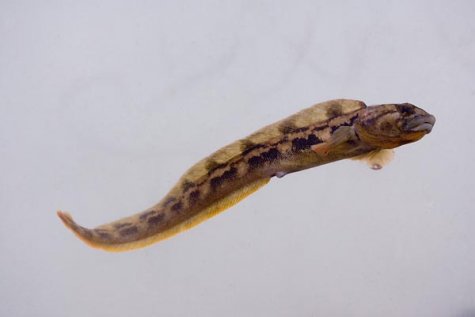Mating period for eelpouts
Photo: Tiit Hunt
Translation: Liis
Female eelpout
| Eelpout |
Kiviluts
|
Zoarces viviparus |
It is literally a mating period comparable to that of mammals. In the autumn the male fish fertilizes the eggs in the body of the female fish. In the uterus of the female the roe grains develop into embryos. Thus the female fish is viviparous or our only fish that gives birth to living young. The “birthing“ starts in November and may last until the end of February. Of course the number of offspring isn’t comparable to that of spawning fish, and only about 10-400 little fish fry are born. The young at once start their independent life in the shelter of the bottom vegetation.
The marine eelpout is similar to the freshwater burbot with respect to the pliable body constitution and the placing of the fins. The head of the female fish is large, the cheeks bulge and the mouth is circled by "voluptuous“ lips. The pattern on its body shows well in Tiit’s photo; mating fishes have brick red coloured fins during the mating period.
Habitats are coastal waters with gravelly or sand bottoms, at depths of some twenty metres – in the Gulf of Riga between the islands of Ruhnu and Kihnu and in the Gulf of Finland. They feed on animals at the bottom: mussels and Macomas, marine woodlice such as the Baltic isopod, crustaceans such as Saduria entomon (a glacial relict in the Baltic), marine ragworms (Nereis diversicolor and others) ... It also devours the roes of spawning Baltic herring, both in autumn and spring.
In the food chain the female fish is prey for preying fishes – perch, cod, eel – and for sea birds.
Like the Latvians, who have the female fish as their national fish and where dishes made from it always must be on a festive table, the Danish also appreciate this fish with the green bones, but their stocks of it have become very poor.









